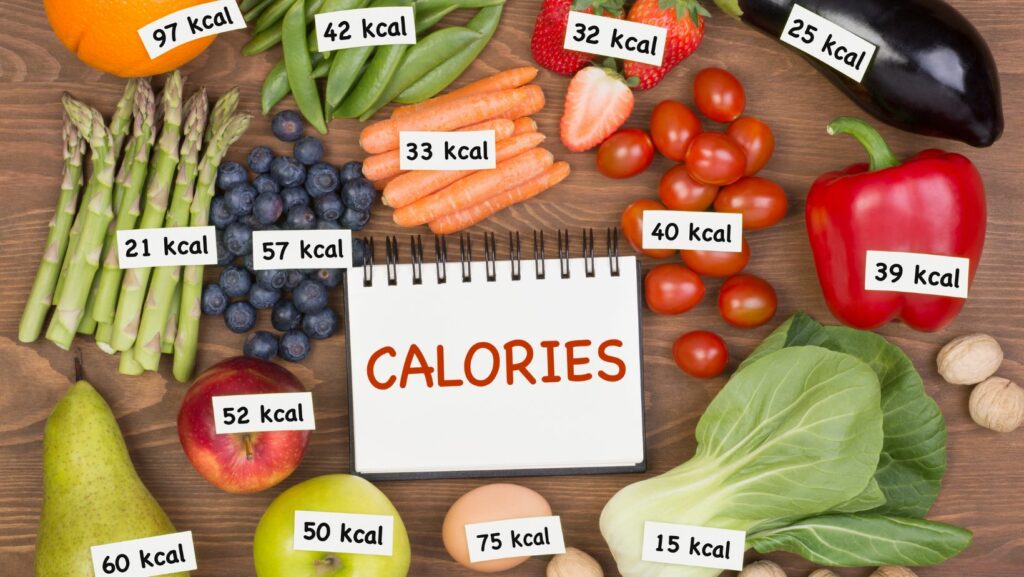Understanding how the menstrual cycle impacts calorie needs can empower individuals to make informed dietary choices. Hormonal fluctuations throughout the cycle can influence appetite, energy levels, and nutritional requirements. Recognizing these changes helps in tailoring a diet that supports overall well-being. During different phases of the menstrual cycle, the body may require varying amounts of calories and nutrients. For instance, the luteal phase often sees an increase in metabolic rate, leading to higher calorie needs. By aligning dietary intake with these natural rhythms, one can better manage energy levels, mood, and even cravings. This approach ensures that the body gets the right nutrients at the right time, aligning with natural hormonal shifts.
Menstrual Cycle Calorie Needs
 Calorie needs fluctuate throughout the menstrual cycle, influenced by hormonal changes. Recognizing these variations can aid in optimizing dietary habits. During the follicular phase, calorie needs are relatively stable. This phase covers the first 14 days of the cycle from the onset of menstruation to ovulation. Estrogen levels rise which can boost mood and enhance energy levels. Normally, there’s no significant change in basal metabolic rate (BMR) compared to the luteal phase. However, nutrient-dense foods such as fruits, vegetables, lean proteins, and whole grains support overall health. The ovulatory phase is brief, spanning about 24-48 hours around the midpoint of the cycle. Energy expenditure remains similar to the follicular phase. Elevated estrogen peaks just before ovulation, enhancing physical performance. Emphasizing balanced meals can keep energy steady. Consuming foods rich in antioxidants, like berries and nuts, can support overall well-being. In the luteal phase, calorie needs increase, typically by 100-300 calories per day, due to a higher metabolic rate. This phase lasts from ovulation to the start of menstruation, roughly 14 days. Progesterone rises, which can lead to increased appetite and cravings for high-carb or sugary foods. Including complex carbohydrates, such as whole grains and fiber-rich vegetables, helps manage energy levels and mitigate cravings.
Calorie needs fluctuate throughout the menstrual cycle, influenced by hormonal changes. Recognizing these variations can aid in optimizing dietary habits. During the follicular phase, calorie needs are relatively stable. This phase covers the first 14 days of the cycle from the onset of menstruation to ovulation. Estrogen levels rise which can boost mood and enhance energy levels. Normally, there’s no significant change in basal metabolic rate (BMR) compared to the luteal phase. However, nutrient-dense foods such as fruits, vegetables, lean proteins, and whole grains support overall health. The ovulatory phase is brief, spanning about 24-48 hours around the midpoint of the cycle. Energy expenditure remains similar to the follicular phase. Elevated estrogen peaks just before ovulation, enhancing physical performance. Emphasizing balanced meals can keep energy steady. Consuming foods rich in antioxidants, like berries and nuts, can support overall well-being. In the luteal phase, calorie needs increase, typically by 100-300 calories per day, due to a higher metabolic rate. This phase lasts from ovulation to the start of menstruation, roughly 14 days. Progesterone rises, which can lead to increased appetite and cravings for high-carb or sugary foods. Including complex carbohydrates, such as whole grains and fiber-rich vegetables, helps manage energy levels and mitigate cravings.
Caloric Needs Throughout the Cycle
Calorie needs vary through the menstrual cycle due to hormonal fluctuations. Diet adjustments can optimize energy, mood, and cravings. During the follicular phase, from menstruation to ovulation, calorie needs remain stable. Rising estrogen levels enhance mood and energy. Estrogen helps regulate appetite, often leading to fewer cravings. Including nutrient-dense foods like lean proteins, vegetables, and healthy fats supports this balance. During the ovulatory phase, lasting 24-48 hours, energy expenditure remains consistent. Elevated estrogen levels during this phase boost physical performance. Maintaining a balanced diet with complex carbohydrates, proteins, and fats aligns with stable calorie needs. Foods such as whole grains, lean meats, and legumes provide sustained energy. In the luteal phase, from ovulation to menstruation, there’s a need for an additional 100-300 calories per day. Increased progesterone levels elevate metabolic rates and appetite. Nutrient-dense foods help manage this rise effectively. Opt for complex carbohydrates, proteins, and fats to keep energy levels stable. Examples include quinoa, nuts, seeds, and fatty fish.
cravings. During the follicular phase, from menstruation to ovulation, calorie needs remain stable. Rising estrogen levels enhance mood and energy. Estrogen helps regulate appetite, often leading to fewer cravings. Including nutrient-dense foods like lean proteins, vegetables, and healthy fats supports this balance. During the ovulatory phase, lasting 24-48 hours, energy expenditure remains consistent. Elevated estrogen levels during this phase boost physical performance. Maintaining a balanced diet with complex carbohydrates, proteins, and fats aligns with stable calorie needs. Foods such as whole grains, lean meats, and legumes provide sustained energy. In the luteal phase, from ovulation to menstruation, there’s a need for an additional 100-300 calories per day. Increased progesterone levels elevate metabolic rates and appetite. Nutrient-dense foods help manage this rise effectively. Opt for complex carbohydrates, proteins, and fats to keep energy levels stable. Examples include quinoa, nuts, seeds, and fatty fish.
Nutritional Tips for Each Phase
 Understanding how the menstrual cycle affects calorie needs can empower individuals to make informed dietary choices. During the follicular phase, focus on nutrient-dense foods like lean proteins, vegetables, and healthy fats to support stable energy levels and mood. The ovulatory phase benefits from a balanced diet of complex carbohydrates, proteins, and fats, enhancing physical performance. In the luteal phase, when calorie needs increase by 100-300 calories per day, incorporating foods like quinoa, nuts, seeds, and fatty fish can help manage appetite and cravings. Aligning dietary intake with the body’s natural rhythms ensures better energy management and mood stability throughout the menstrual cycle. By following these nutritional tips, individuals can optimize their overall well-being and maintain a balanced diet tailored to their unique physiological needs. This phase also sees increased cravings, making it crucial to choose healthy snacks. By precisely adjusting dietary intake based on the menstrual cycle’s phases, individuals can better manage energy and mood.
Understanding how the menstrual cycle affects calorie needs can empower individuals to make informed dietary choices. During the follicular phase, focus on nutrient-dense foods like lean proteins, vegetables, and healthy fats to support stable energy levels and mood. The ovulatory phase benefits from a balanced diet of complex carbohydrates, proteins, and fats, enhancing physical performance. In the luteal phase, when calorie needs increase by 100-300 calories per day, incorporating foods like quinoa, nuts, seeds, and fatty fish can help manage appetite and cravings. Aligning dietary intake with the body’s natural rhythms ensures better energy management and mood stability throughout the menstrual cycle. By following these nutritional tips, individuals can optimize their overall well-being and maintain a balanced diet tailored to their unique physiological needs. This phase also sees increased cravings, making it crucial to choose healthy snacks. By precisely adjusting dietary intake based on the menstrual cycle’s phases, individuals can better manage energy and mood.

